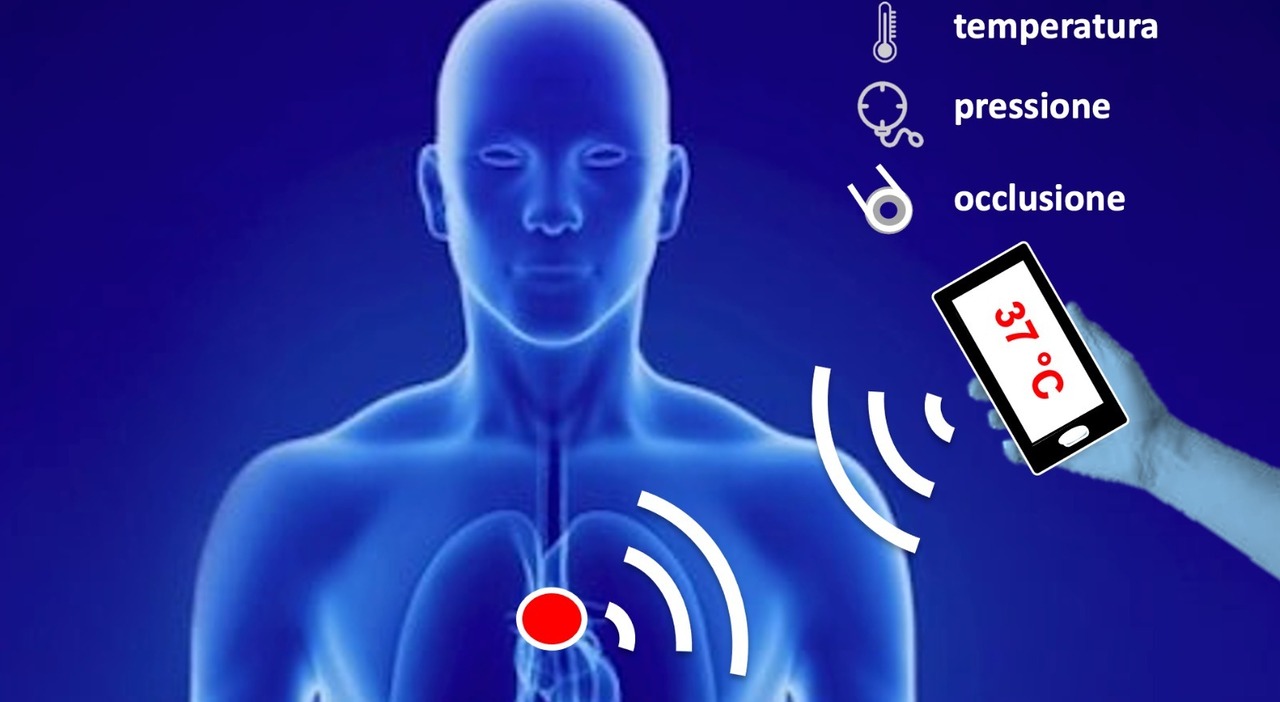We still don’t know everything about our body. Especially the internal reactions, the most difficult to monitor, especially in the exact moment they happen. Among the medical trends of the future, there will also be the study of physiology from within the human body, which will be made possible by new micro sensors, without batteries, which therefore do not cause any risky interactions with the human system. We talked about it with Gaetano Marrocco, engineer in charge of the pervasive electromagnetism laboratory at the University of Tor Vergata in Rome.
They are called Rfid sensors, what are they?
«It’s a technology I’ve been working on for about 20 years, which allows radio frequency identification; it is the evolution of the most famous barcode that we find everywhere, which requires an optical reader to give access to specific information. After various passages we have arrived at the electromagnetic label, in which the information is concentrated in a small chip, activated from the outside by an antenna. It is a system very similar to the device we use for the motorway».
How does this technology work?
«When the sensor is near a reader, the electromagnetic field produced is picked up by the antenna which feeds the microchip and which sends back a digitally coded signal which identifies the object. The sensor technology remains silent until it is interrogated by an external device.”
How it’s done?
«There is a microchip whose dimensions vary from a few millimeters to a few centimetres, based on the final application, an antenna printed on a plastic support or a wire, which receives the energy and activates the chip, which in turn time takes the data from the memory and reflects it back, through a sort of switch that changes the way in which the electromagnetic wave is reflected».
A practical example?
«Let’s think of the reflector, which reveals the road sign only when illuminated by the headlights of the cars, while in the dark it does not send any information. The concept is the same.”
And what was your innovation compared to an already existing technology?
«We have also associated that information with that of the physical state of the object on which the sensor is labelled; for example temperature, humidity, deformation, pressure, presence of physical and chemical quantities. After years of applications in the environmental field, we have moved on to medicine, because epidermal sensors can be integrated on the skin, but also inside body prostheses, which become data generators, like a dental capsule».
Have you tested them in the mouth?
“That’s right. It all started from a challenge to the medical engineering students of Tor Vergata, to whom I asked to use the metal pin of the dental prosthesis as an antenna that activates the sensor implanted on the capsule. From there we used the sensor to detect the temperature, which indicates an ongoing infection, for example a cavity, but we can use it for pressure between the teeth, so for bruxism and the information is readable by an external antenna at form of silicone patch applicable on the cheek. This philosophy can be replicated to any other internal prosthesis, which would have a predictive role, because it is able to capture minimal symptoms that are not yet perceived by the body”.
Three possible applications, you are also experimenting with breathing, especially that of children.
«Today for a precise analysis of the breath, small tubes are inserted into the nose, a very invasive solution and not applicable to very young children. Taking advantage of research on epidermal electronics, however, together with Nicoletta Panunzio and Francesco Montecchia, we have developed sensors that are applied under the nose and measure the different temperatures when inhaling and exhaling to profile the breath. We did an experiment at the Umberto I Polyclinic in Rome comparing it with traditional spirometry, ascertaining that they are two almost interchangeable techniques. We are also carrying out tests on newborns and on mobile breathing, for example in athletes, which is very difficult to monitor, but performed in more realistic conditions than up to now. And this would be completely new.”
Could it also find application in the cardiac field, for example by attaching the micro sensor to a heart valve?
«We already have an advanced project on this front, developed together with Federica Naccarata, Roberto Verzicco, Cecilia Occhiuzzi and Miriam Gagliardi. The goal is to transform a cardiac prosthesis which is an object without electronics, into an object capable of transferring data, such as a tooth, by exploiting the internal infrastructure, the stent which has metal parts and therefore can function as a antenna”.
What information can it transfer?
«The temperature inside the artery, therefore the maximum precision, the blood pressure, the functioning of the valve, infection problems, in short, we would have an internal window of the body and in a diagnostic scenario, a doctor will just need to place an antenna on the patient’s chest to interrogate the sensorized prosthetic heart valve».
Have you already done some tests?
«The trend of research and development of biomedical companies are starting to deal with these prostheses that I define as cyber, because they have not only mechanical or chemical properties, but also digital ones. I believe that within the next 10 years, this will be the approach and the one relating to the study of physiology will change, opening up new scenarios and giving us further knowledge on the functioning of our body, thanks to a technology that provides for truly minimal changes to the implanted object”.
© breaking latest news
